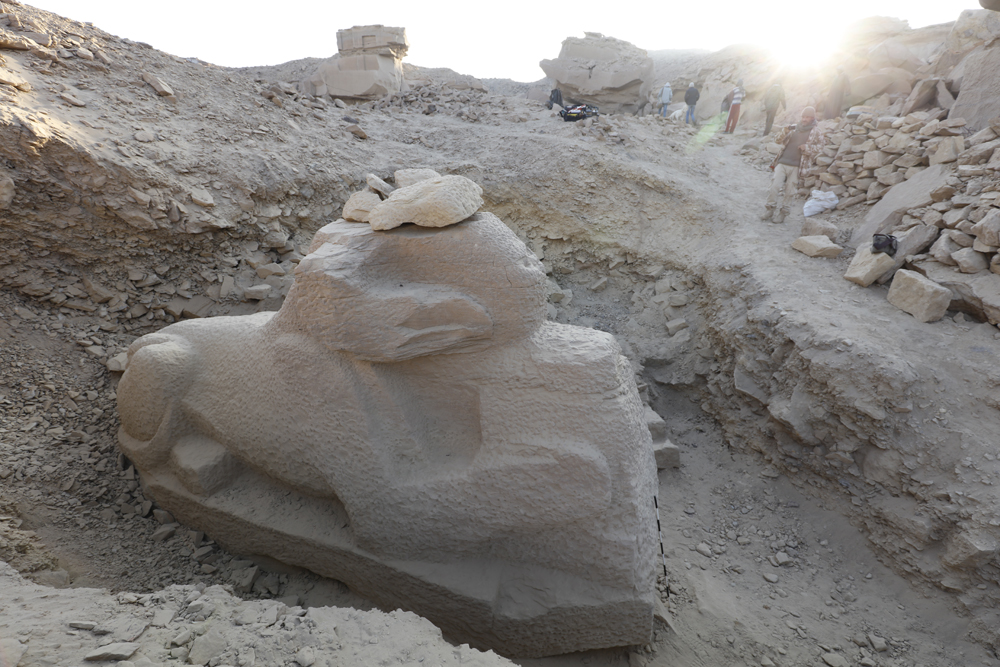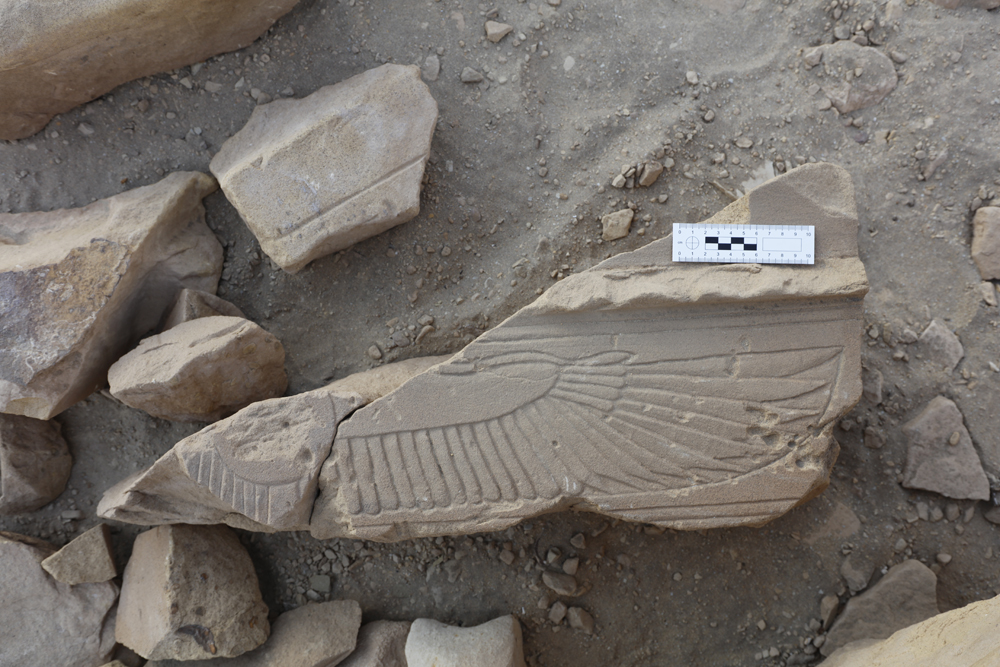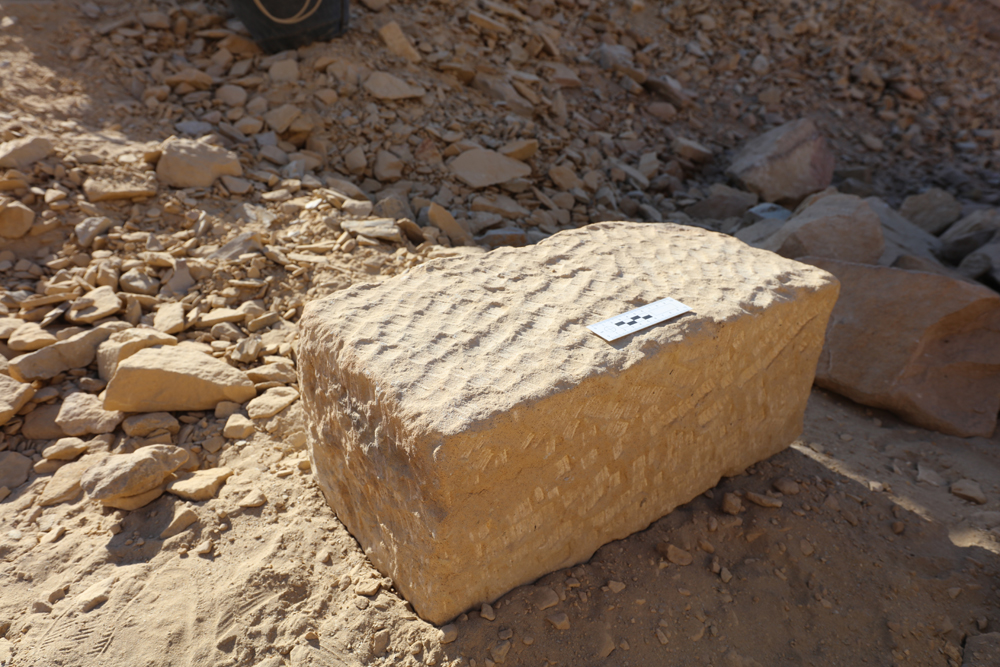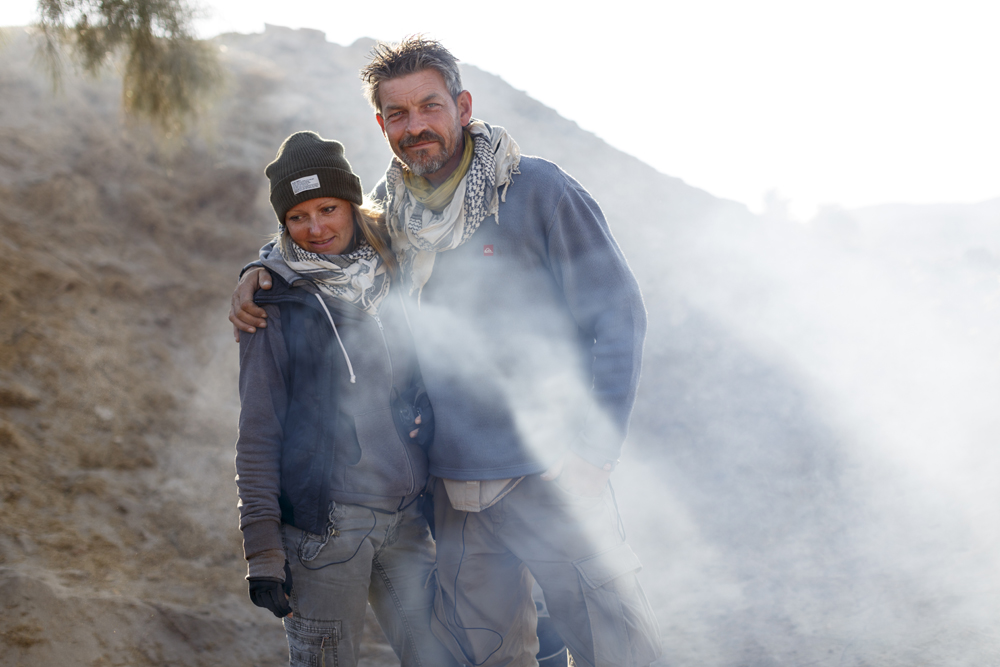Photos: The Ram-Headed Sphinx of Gebel el-Silsila
Excavated Sphinx

The ram-headed sphinx carved more than 3,000 years ago sits in a trench excavated from quarry rubble. The sphinx looks similar to some finished statues found at a temple complex in the Egyptian archaeological site of Karnak, according to the project directors. It's unclear why the sphinx was left unfinished and abandoned.
On a wing

A fragment of stone bearing the carving of a wing, found near the ram-headed sphinx. Archaeologists discovered hundreds of carved stone fragments from a Naos, or shrine, to Amenhotep III at the site. The pharaoh ruled from around 1390 BC to 1351 or 1353 BC. He was father of the pharaoh Akhenaten, whose chief consort was the famous Nefertiti. Akhenaten fathered Tutankamun (probably by another of his consorts), making Amenhotep III King Tut's grandfather.
Chisel Marks

A sandstone block bearing ancient chisel marks from the quarry at Gebel el-Silsila. There was a noticeable change in the rubble around the ram-headed sphinx, excavation assistant director Ward told Live Science. Most of the rubble around the quarry is made up of large rock chunks created by large chisels. Around the sphinx, the rock shards were finer, indicating delicate work with small tools by artisans.
Excavations directors

Excavation director Maria Nilsson and co-director John Ward at the site of Gebel el-Silsila in Egypt. The archaeologists and their team have discovered a variety of tombs, statuary and structures at the quarry site. Among the latest discoveries was an inscription in red ochre dating to the opening of the quarry during the reign of Amenhotep III. Researchers are working to translate the text now.
Sign up for the Live Science daily newsletter now
Get the world’s most fascinating discoveries delivered straight to your inbox.

Stephanie Pappas is a contributing writer for Live Science, covering topics ranging from geoscience to archaeology to the human brain and behavior. She was previously a senior writer for Live Science but is now a freelancer based in Denver, Colorado, and regularly contributes to Scientific American and The Monitor, the monthly magazine of the American Psychological Association. Stephanie received a bachelor's degree in psychology from the University of South Carolina and a graduate certificate in science communication from the University of California, Santa Cruz.










